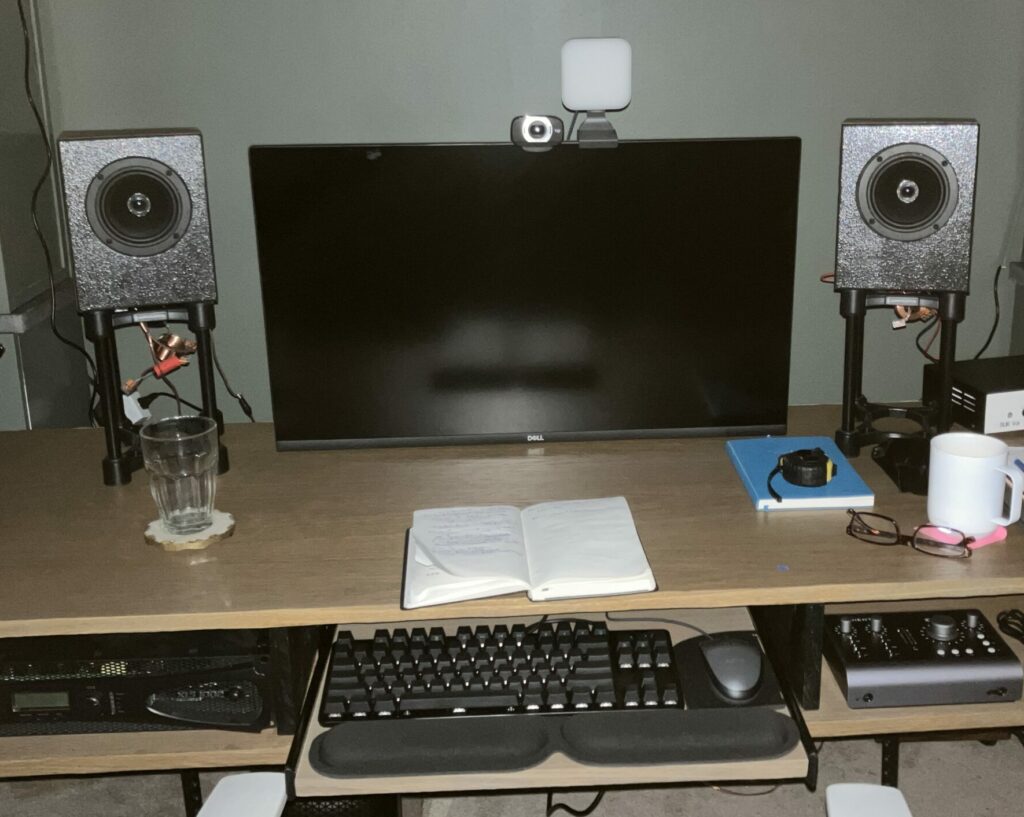
Impastos
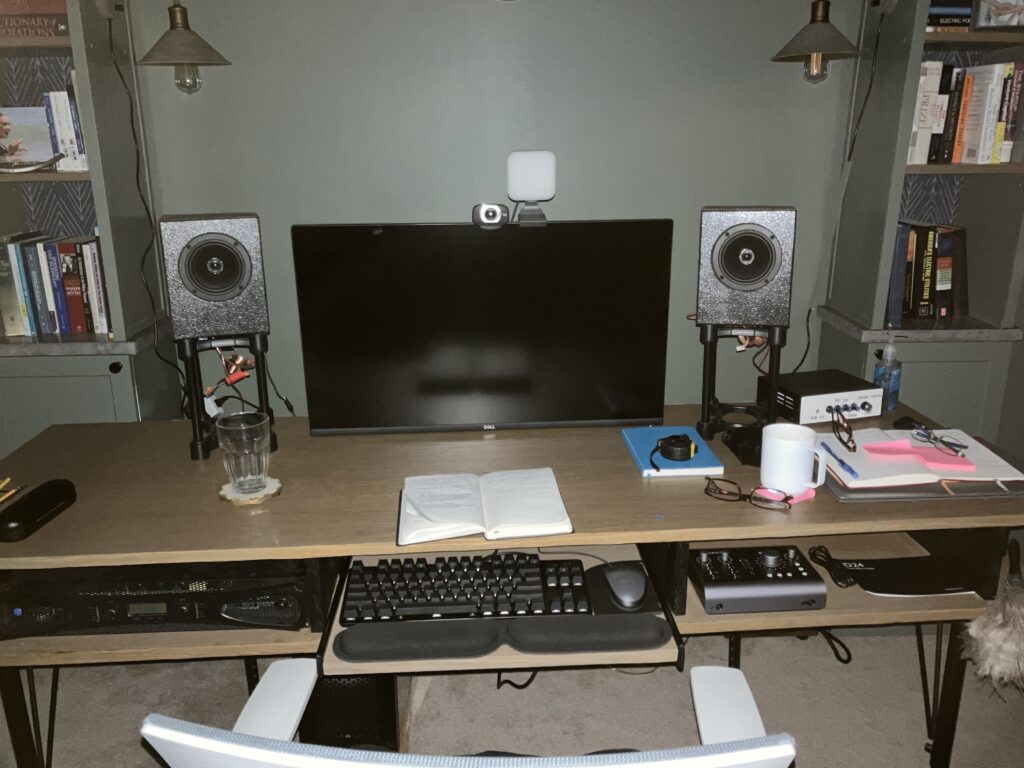
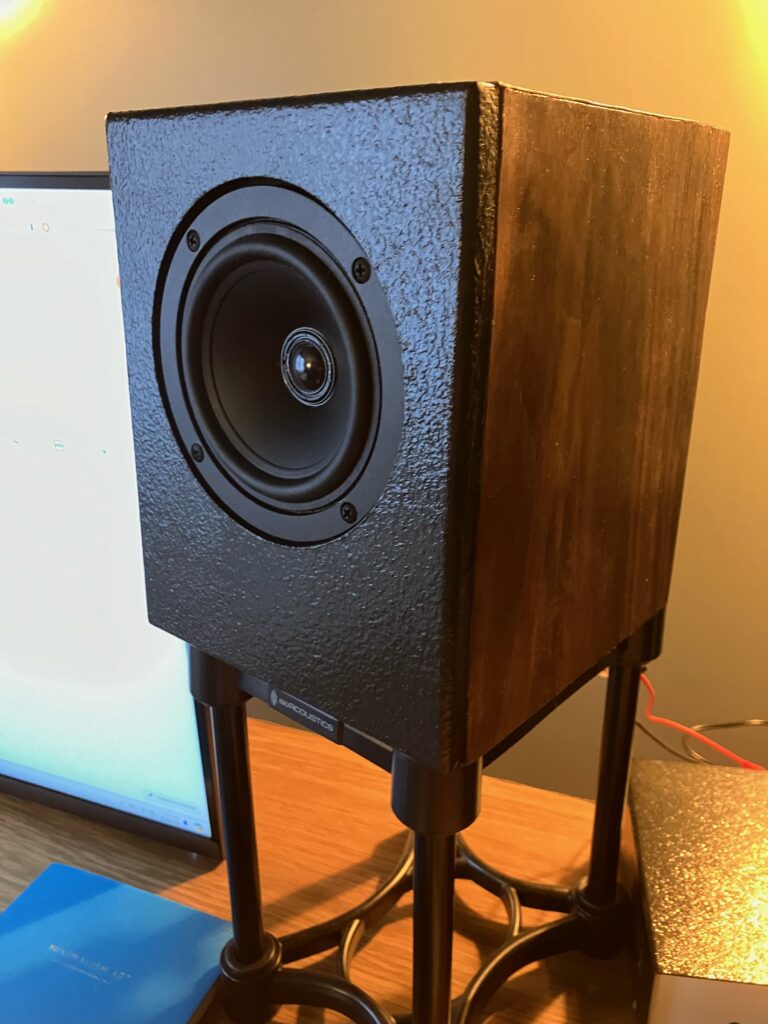
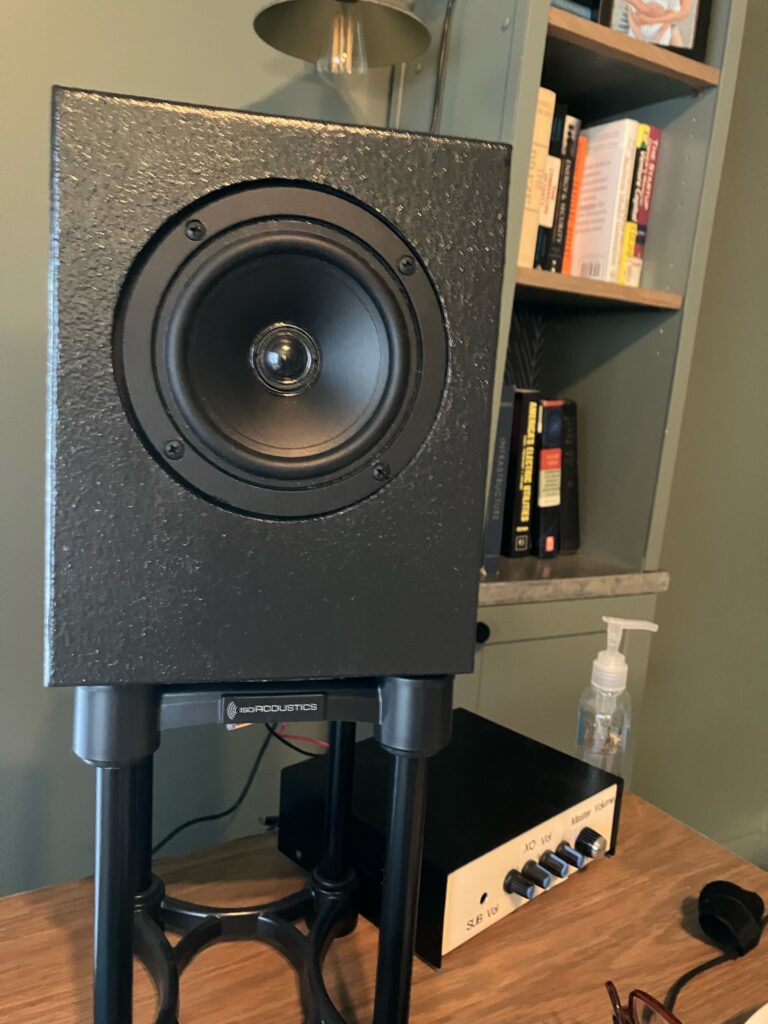
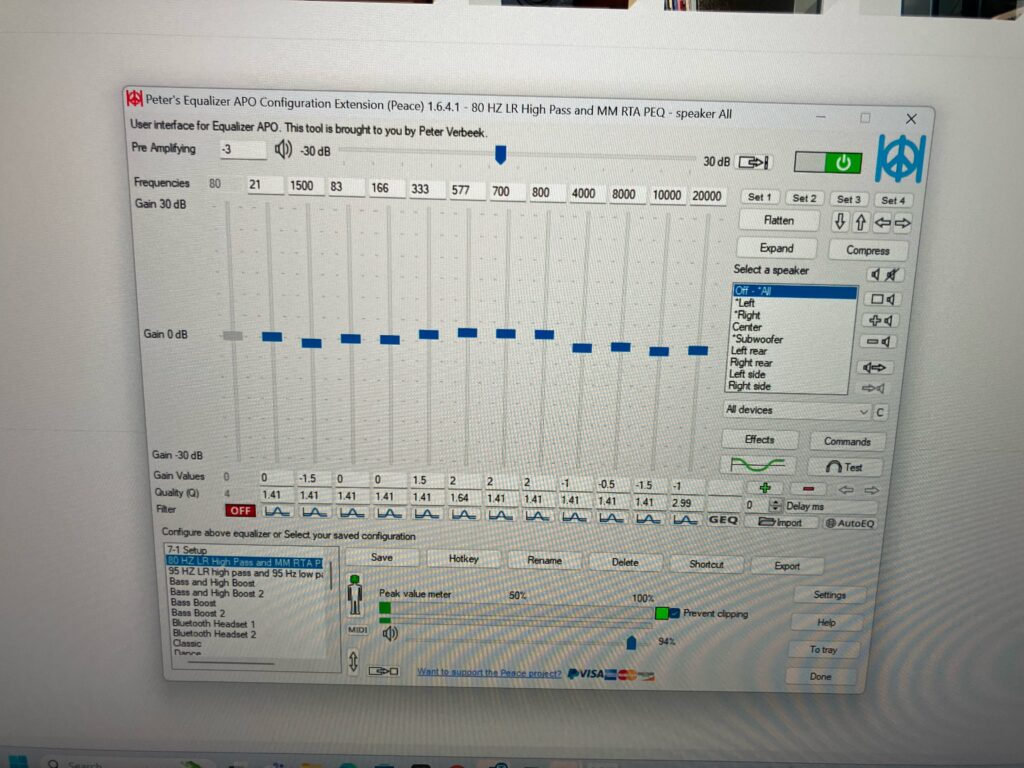
Designer:
Colonel7
Project Category:
Bookshelf Speakers
Project Level:
Intermediate
Project Time:
8-20 Hours
Project Cost:
$100-$500
Project Description:
I wanted to try out coaxials and thought a nearfield monitor set-up for work and music listening would work well and it has so far. These are called the Impastos because I used artist impasto (adds texture to paint) mixed with black floor paint and applied with a foam roller to give it a textured surface – kind of like a DIY Duratex.
Design Goals:
I work from home and needed higher quality desk speakers for both meetings and music listening in my office. I wanted good quality sound in small cabinets that would also sound good if I sat in a reading chair to relax without adjusting the speaker location or height. Coaxials are good for this so I wanted to try a pair knowing that I would high pass them and use a subwoofer from about 80Hz down.
Driver Selection:
This was a budget project so chose the Dayton CX120 that is a 4″ inch driver with a 3/4 inch tweeter.
Enclosure Design:
I modeled the drivers in WinISD and came up with a cabinet that is 0.14 cubic feet (6.5″w x 8 1/4″ H x 7″ D). Although I have a 1 and 5/8″ curved pvc vent of about 6 inches, in practice I high-pass the speakers at 80 Hz using my PC as a source.
Crossover Design:
I used a combination passive crossover and DSP to clean up the response at the listening position. Honestly, these are pretty cheap drivers, and the response is a little uneven like many coaxials. I tried a number of different crossovers (including from some other CX120 builds on PETT) and wasn’t satisfied with any of them. I then tried a simple crossover and then used APO Equalizer Peace to tweak the response by using RTA where I sit at my desk. I can do this because my PC is my source and Peace is free. Voila – much better sound. Also coaxials sound bright on-axis so I listen to these about 10-15 degrees off axis. I use a sub for the lower end.
Tips & Tricks:
I like to use WAGO wire lever nuts for making passive crossovers. It’s easy to switch out parts and they’re secure unlike alligator clips.
Conclusion:
The CX120s are a good way to try out a coaxial design. They image well and I’m happy using them as work monitors whether for music or meetings. For sure they don’t get loud without distorting and I wouldn’t recommend using them beyond about 5-6 feet of listening distance, but I don’t need them to do that. For a desk solution and quiet listening they work well.
About the Designer:
I’ve been doing DIY speakers and amplifiers and some woodworking for about 4 years now. There’s always something new to learn and it’s very satisfying designing my own solutions and problem solving.
Project Parts List:
| Part # | Description | Qty. |
| 295-384 | Dayton Audio CX120-8 4″ Coaxial Driver with 3/4″ Silk Dome Tweeter 8 Ohm | 2 |
| 260-048 | Band-It Walnut Veneer 24″ x 96″ Paper-Backed | 1 |
| 257-048 | Dayton Audio 1.0mH 20 AWG Air Core Inductor Crossover Coil | 2 |
| 027-334 | 5.6uF 100V Electrolytic Non-Polarized Crossover Capacitor | 2 |
| 027-113 | Audyn Cap Q4 3.9uF 400V MKP Metalized Polypropylene Foil Crossover Capacitor | 2 |
| 004-4 | Dayton Audio DNR-4.0 4 Ohm 10W Precision Audio Grade Resistor | 2 |

+ There are no comments
Add yours